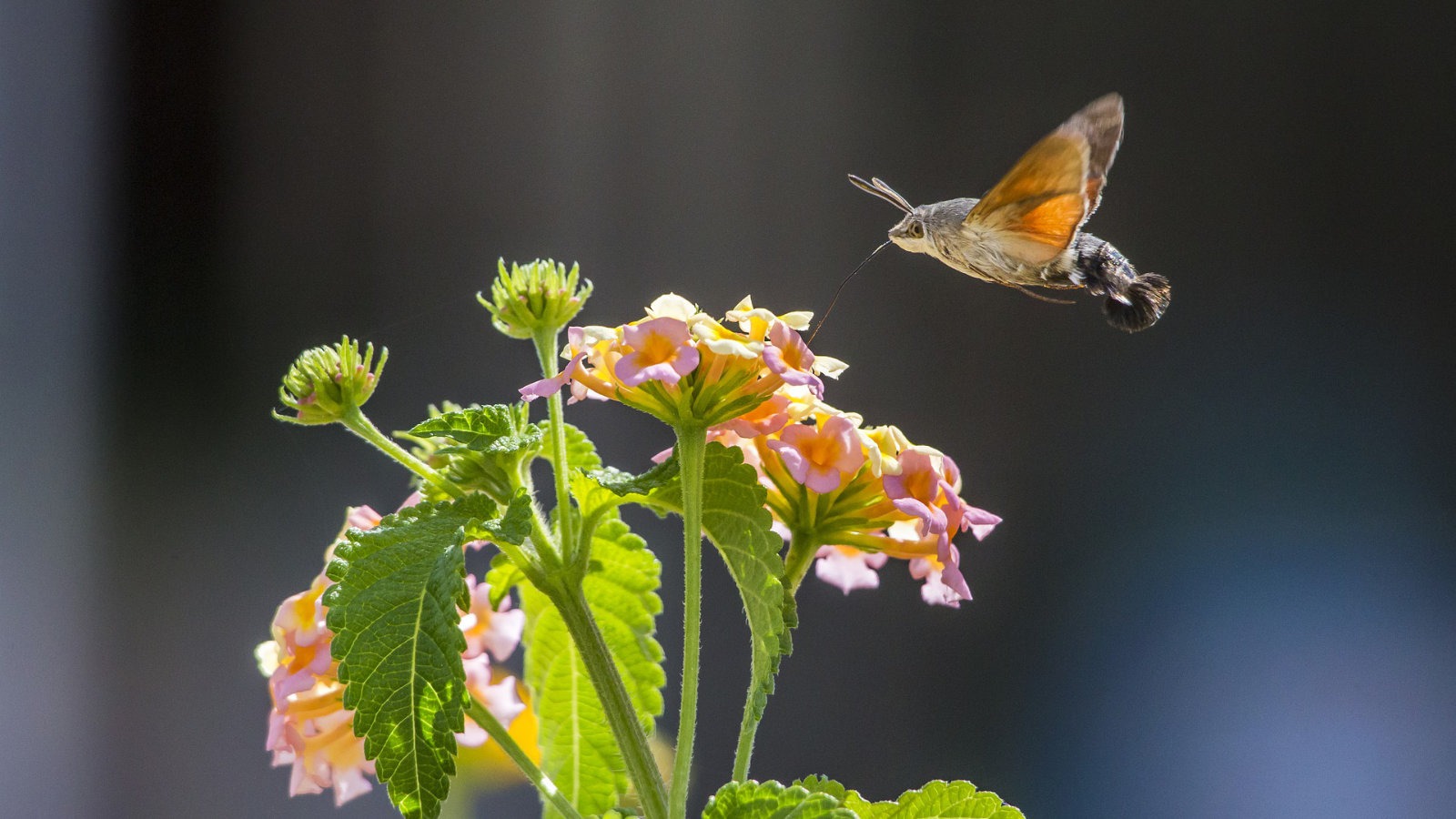As the name suggests, this interesting species resembles the hummingbird, so much so that many people mistake it for its namesake on first sighting. Unlike other moths, it flies in a characteristic hover with its wings beating so fast that they create not only a blur to the naked eye but a hum to the ear reminiscent of the hummingbird. Its body is a dark browny grey with colourful white and yellow dots on the fan-like tail, while its hindwings are patterned with orange or reddish brown patches, and its forewings are brown with dark lines across them.
- Larvae: Its caterpillar is green with two grey stripes fringed with cream on its flanks. It also has a purplish red horn, which changes appearance to blue with an orange point as the larva develops.
- Latin name: Macroglossum stellatarum
- Size: 40-50mm wingspan
Overview
The Hummingbird Hawkmoth is an immigrant species, which travels up from southern Europe in large numbers in spring. Though some stay to breed, our winters are normally too harsh for them to survive, so they normally return to warmer climes towards the end of autumn. Adults can produce two or more clutches of eggs per year, which it usually lays on Bedstraws. Being similar in appearance to the flower buds of this plant, the brood of up to 200 eggs is well camouflaged. Like butterflies, adults feed on nectar using an unfurling proboscis. It is active in daylight so can be seen at most times of day from spring until autumn.

In the garden
Its frenetic lifestyle means that the Hummingbird Hawkmoth craves nectar-rich plants such as Honeysuckle, Red Valerian, Jasmine and Buddleia. Providing these plants, as well as the host plant, Galium (Yellow Bedstraw in particular), for its eggs, will be sure to attract this warm weather visitor. It particularly likes to use plants whose flowers have long, curved sepals, since the nectar is posited much further back in the flower, making it harder to reach for other species, thus avoiding competition from other nectar feeders. The good news is, once you’ve got these wonderful insects hooked, you won’t have trouble getting them to come back – they are known to return to the same flowers at the same times each day!
Did you know…?
The hummingbird hawkmoth has a remarkably good memory for an insect, and has been shown to be able to learn colours.